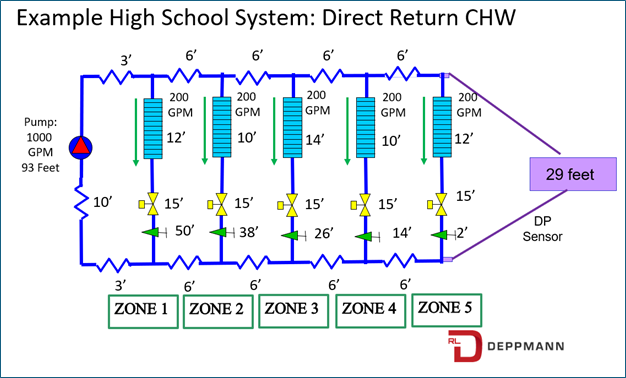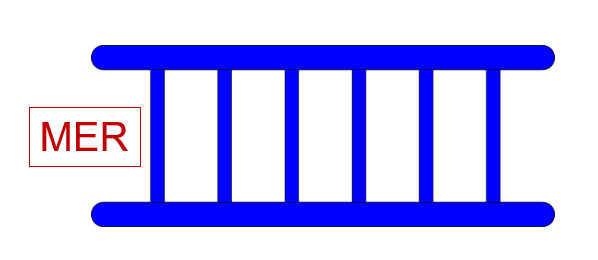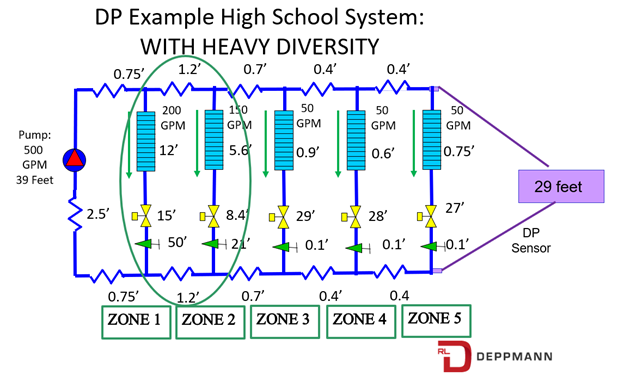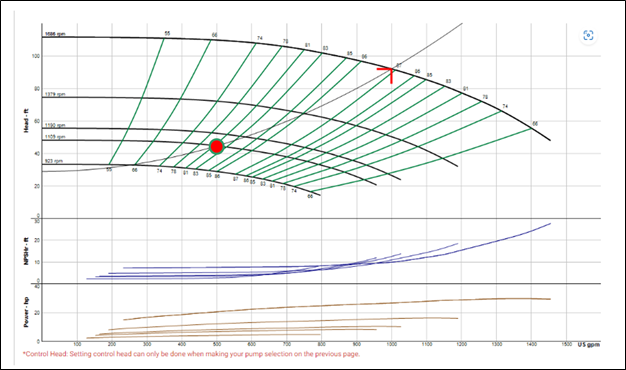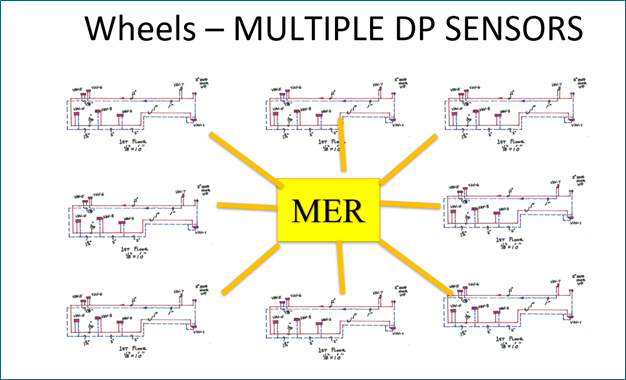Commercial and industrial hydronic heating and cooling systems will usually have variable speed distribution pumps. There are multiple ways to identify what speed the pumps should operate at to satisfy the load requirements while saving energy costs. Today, the R. L. Deppmann Monday Morning Minutes looks at system types and diversity to assist the engineer in making the decision about the control method.
Type of Variable Speed Pump Control
These blogs provided a quick summary of some methods of variable speed pump control for hydronic systems. The three types of pump control normally used are differential pressure (DP), Sensorless power consumption control, and two-way valve position control. Please visit our previous blogs Variable Speed Systems: Types of Sensors (Part 1) and Variable Speed Systems: Types of Sensors (Part 2) for more information.
Systems Piped as Ladders
We often talk about systems and show systems as ladder type designs. This is a term we use here at R. L. Deppmann. Look at the diagram shown above. The mechanical room is on one side and the system zones or terminal units spread out to the right. The system is designed as a direct return piping layout. More about that later. The water flows from the mechanical room and in general moves past the various zones as it gets to the last zone. It looks like a ladder.
As the flow rate drops in the “rungs” of the ladder, the pressure drop in the “rails” is reduced. When the pressure drop in each zone or rung is about the same, a differential pressure sensor is normally placed at the end of the loop or last rung of the ladder.
If the last zone does not have the worst pressure drop, the sensor may be located closer to the pump in the zone that does have the worst pressure drop.
If there is little diversity of required flow rate from one zone to another, sensorless control or differential pressure control or two-way valve position control will work fine.
If there is diversity between the zones, differential pressure and more than one will work and, of course, valve position will work. Sensorless may miss the required flow rates in the direct return system.
Direct Return Diversity Example: DP vs. Sensorless
Let’s look at the system shown above and apply some diversity. Assume the first two zones near the mechanical room are the gyms and auditorium area. Now think of a hot night when school is not in session and the classrooms are set back but there are activities with full people loads in those common areas. We’ve all been there. Sitting in a hot auditorium on a humid summer day and sweating. We are sure the engineer blew the calculations, but it’s just the wrong control.
We have the same system, which was designed for 1000 GPM, but it only requires 500 GPM. We did round some of the numbers, but they are close. The circled zones are the common areas being used. Look at the required pressure drop in those zones compared with the pump head.
The pump curve looks like this with the red circle being approximately the sensorless and single DP control. Both will miss the target. There is not enough pump head.
The solution could involve a redesign of the layout, a tertiary pump addition, a change in type of balance valves, or the addition of a second DP sensor.
The Solution with the Differential Pressure System
In the DP system we would simply add a second DP sensor between zone 1 and zone 2 and the control system can activate it for control on those special use days.
Again, the more expensive first cost system of the two-way valve position would be a great solution.
Systems that Look More Like Wheels
Systems where the mechanical room is more central require more thought. Here the distribution pressure drop is not common. Assume the zones on the left, shown above, are calling but the zones on the right are not. A single DP sensor would be difficult to locate. The sensorless may not work if there is diversity. If pressure drop in all directions are similar, multiple DP sensors may be a solution. The more sensors, the more the first cost. At that point, the two-way valve position control may be the best option.
Of course, with all systems there are design choices. A reverse return system may work better. Using automatic balance valves such as those supplied by Griswold Controls or Bell & Gossett may be an option. Using pressure independent control valves may also simplify the control system.
There is also the possibility of designing a system with more pumps. Tertiary pumps may solve the control issues. The engineer can choose from all the tools in the toolbox to obtain the best system in the owner’s budget. R. L. Deppmann is ready to join the discussion and help you choose better solutions.


